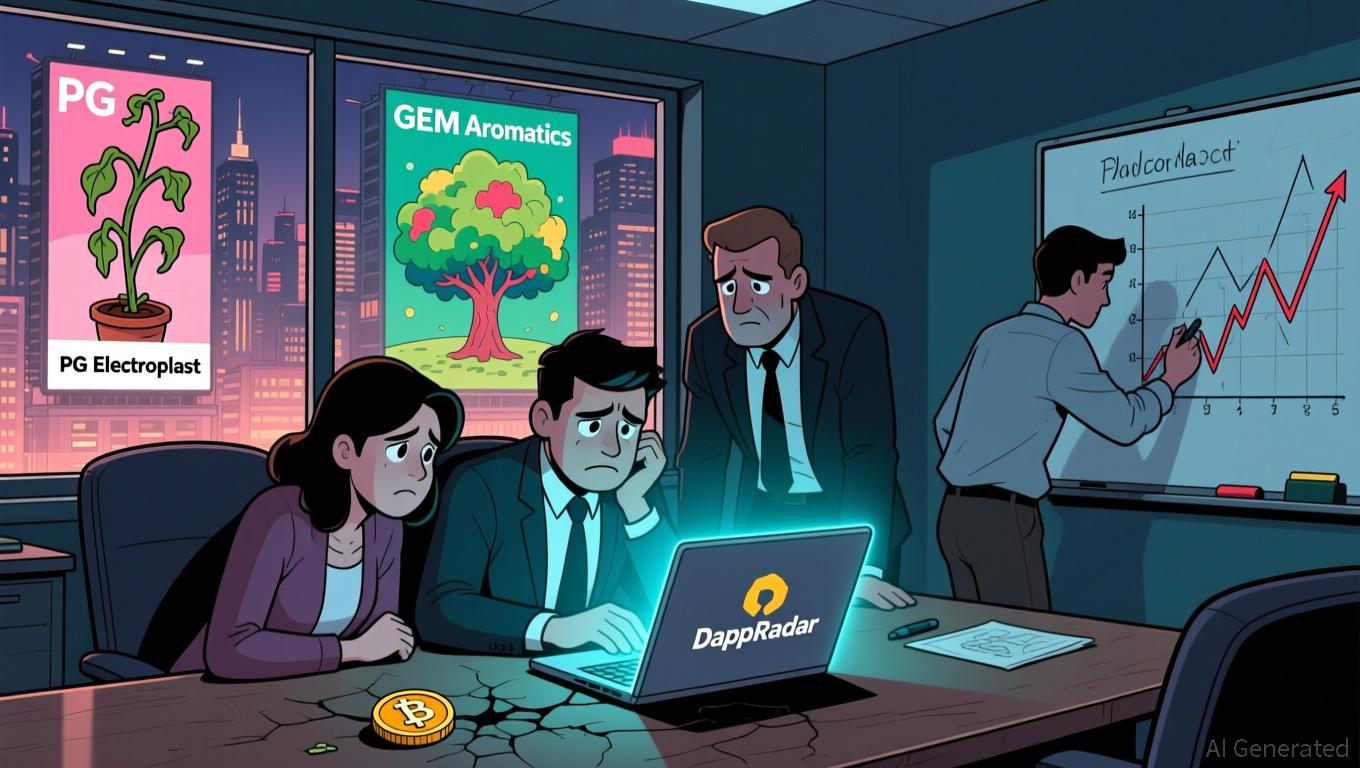DappRadar's Shutdown Reflects Challenges Faced by the Industry Amid Market Volatility
- Web3 analytics firm DappRadar announced its shutdown due to "financially unsustainable market conditions," causing its RADAR token to drop 30%. - Companies like PG Electroplast and GEM Aromatics reported revenue declines amid U.S. tariffs, GST changes, and raw material costs, reflecting broader economic challenges. - Geox cut 2025 sales forecasts by high single digits after 6.2% year-to-date revenue fall, while cost cuts helped stabilize its EBIT margin. - Tech stocks face volatility: Nvidia downgraded a
DappRadar, a prominent name in Web3 analytics, has announced it will soon cease operations, marking a significant departure from the DApp monitoring industry after seven years. Founders Skirmantas Januškas and Dragos Dunica
DappRadar’s closure comes amid a series of strategic shifts by companies facing economic challenges. For example, PG Electroplast, a leading provider of electronic manufacturing services (EMS) and plastic molding,

The difficulties faced by these organizations illustrate a global economic environment shaped by geopolitical instability, evolving regulations, and changing consumer preferences. For instance,
As investors reconsider their long-term commitments, the RADAR token’s performance has become central to debates about the sustainability of Web3 analytics businesses. The token’s steep fall reflects wider concerns among investors about the prospects for blockchain analytics.
Market volatility is also affecting technology stocks, prompting analysts to reassess their positions in fast-growing firms.
DappRadar’s closure marks a pivotal moment for the Web3 analytics industry, joining a broader movement of companies adjusting to an environment defined by unpredictability. Across sectors from manufacturing to cloud technology, businesses are striving to balance innovation with financial discipline, navigating a landscape shaped by regulatory, economic, and technological shifts.
Disclaimer: The content of this article solely reflects the author's opinion and does not represent the platform in any capacity. This article is not intended to serve as a reference for making investment decisions.
You may also like
Lloyds Completes Curve Purchase Amid Shareholder Disputes Over Valuation
- Lloyds acquires Curve for £120M amid shareholder backlash over undervaluation and governance concerns. - IDC Ventures, Curve's largest investor, rejects the deal via legal action, disputing transparency and valuation. - Lloyds aims to integrate Curve's payment tech to compete with Apple/Google Pay amid EU regulatory shifts. - The acquisition reflects fintech consolidation as banks exploit lower valuations to fast-track digital infrastructure. - Legal challenges and governance disputes could delay the dea

XRP News Update: XRP ETFs See Growth Amid Price Decline—Is a Repeat of the Past on the Horizon?
- Canary Capital's XRPC ETF , the first U.S. spot XRP ETF, launched with $58M in trading volume and $245M inflows on Nov 13, 2025. - Nine XRP ETFs, including Franklin Templeton's EZRP and Bitwise's entry, are set to debut within 10 days, boosting institutional adoption and liquidity. - Whale activity and token withdrawals signal accumulation ahead of ETF demand, while XRP's price dips below $2.30 amid ETF-driven market shifts. - Analysts compare XRP's post-ETF decline to Bitcoin's 2021 dip, suggesting pote

Fintech Companies Observe Nigeria's Declining Inflation While High Interest Rates and Core Inflation Persist
- Nigeria's inflation dropped to 16.05% in October 2025, creating opportunities for fintechs to expand services amid improved consumer spending potential. - High core inflation (18.69%) and unchanged central bank rates persist as barriers to affordable microloans and credit products for fintechs. - Regional inflation disparities (9.09%-20.14%) require tailored fintech solutions, with USSD/mobile interfaces targeting underserved rural and urban markets. - Africa's digitization efforts, including AfCFTA infr

Hyperliquid News Today: "NVIDIA's $500 Billion AI Order Backlog Sparks $5 Trillion Hype Amid Concerns of Excess Capacity"
- NVIDIA's $500B AI chip order backlog through 2026 highlights explosive demand for Blackwell/Rubin GPUs, positioning it as AI infrastructure leader despite geopolitical risks. - Q3 revenue forecast at $54.8B (+56% YoY) driven by $48B+ data center sales, fueled by Microsoft/Amazon hyperscaler investments in AI infrastructure. - Market skepticism grows over demand sustainability, with 90%+ spending concentrated in top cloud providers and U.S. export bans costing $10s of billions in China AI GPU sales. - $5T
